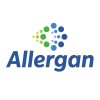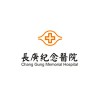
A Safety and Efficacy Study of XP19986 in Subjects With Spasticity Due to Spinal Cord Injury
Muscle SpasticityThe purpose of this study is to evaluate efficacy and safety of treatment with XP19986 Sustained Release (SR) Tablet compared to placebo in subjects with spasticity due to spinal cord injury

Oral Baclofen Pharmacokinetics and Pharmacodynamics in Children With Spasticity
SpasticityCerebral PalsyOral baclofen is used commonly to treat spasticity in children with cerebral palsy. Although for adults there is dosing,safety and efficacy information in the package insert, this is not the case for children. The purpose of this study is to determine how fast the drug is cleared from the body, the correct dose, and long-term safety and efficacy for children with spasticity.

Safety Study of Botulinum Toxin Type A for the Treatment of Focal Upper Limb Poststroke Spasticity...
StrokeMuscle SpasticityThe purpose of this study is to evaluate the safety of repeated doses of Botulinum Toxin Type A for the treatment of focal upper limb poststroke spasticity

Dutch National ITB Study in Children With Cerebral Palsy
Cerebral PalsySpasticityThe objective of this study is to determine the efficacy and safety of treatment with intrathecal baclofen for severe spasticity in children with cerebral palsy.

Comparison of Safety and Efficacy of Tizanidine Hydrochloride Capsules Versus Zanaflex® (Tizanidine...
Multiple SclerosisMuscle Spasticity2 moreThis study is being conducted to compare the impact of somnolence (sleepiness) on cognition (awareness) as well as the safety and effectiveness of tizanidine hydrochloride capsules versus Zanaflex® (tizanidine hydrochloride tablets) taken while in the fed state (just after a meal) and in the fasted state (before a meal) in patients with moderate to severe spasticity.

Trial Comparing Two Commercial Formulations of Botulinum Toxin Type A in the Treatment of Spasticity...
SpasticityThe purpose of this study is to compare the effectiveness between two commercial formulations of botulinum toxin type A in the treatment of spasticity through the Ashworth scale.

Effects of Pediatric Aquatic Therapy in Children With Spastic Cerebral Palsy
Spastic Cerebral PalsyAquatic intervention had been applied in children with neuromotor impairment for years, yet there has been little progress toward objective identifications of therapy goals, interventions, and outcomes. Thus, we attempt to design aquatic intervention activity for children with cerebral palsy to evaluate the effect of hydrotherapy. Purpose: To evaluate the effects of pediatric aquatic therapy on motor performance, daily activity and social participation in children with spastic cerebral palsy. Method: The study enrolled 27 children with spastic cerebral palsy aged from 4 to 12 years old.These children were dived into two groups: traditional rehabilitation therapy (control group), and hospital based pediatric aquatic therapy program. We evaluate the motor performance, daily activity and social participation before and after the intervention and compared the difference in improvement between groups. The measurements include modified Ashworth score, Gross Motor Function Measure (GMFM -66), Vineland Adaptive Behavior Scale (VABS) , and Cerebral Palsy Quality of Life Questionnaire for Children (CPQOL). Expect effect: We suppose pediatric aquatic therapy in spastic cerebral palsy children could improve motor function and daily activity.Children could improve self-esteem and we hypothesize this could improve social participation.

Effects on Quality of Life Following Dysport Treatment in Post-stroke Spasticity of the Arm
Cerebrovascular AccidentMuscle SpasticityThe main purpose of this study is to assess the effect on Quality of Life of two cycles of Dysport treatment on post-stroke spasticity of the upper limb. The effect of treatment on spasticity and function will also be measured.

Treatment of Spastic Equinovarus Foot After Stroke
Spastic EquinovarusThis study evaluates treatment for spastic foot after stroke using ankle foot orthosis with or without selective injection of BTA (Botox).

Effect of Dalfampridine in Patients With Hereditary Spastic Paraplegia
Hereditary Spastic ParaplegiaThere are limited but encouraging results supporting the use of dalfampridine in patients with hereditary spastic paraplegia. The investigators aimed to investigate the effects of dalfampridine on walking speed, muscle length, spasticity, functional strength, and functional mobility in patients with hereditary spastic paraplegia. In this triple-blinded, randomized, placebo-controlled trial, 4 patients with hereditary spastic paraplegia received dalfampridine (10 mg twice daily) plus physiotherapy (2 times per week), and 4 patients received placebo plus physiotherapy for a total duration of 8 weeks. The assessor and treating physiotherapists, and patients were masked to the group allocation. The primary outcome was Timed 25-foot Walk Test at the end of the 8-week treatment. The secondary outcome measures were functional mobility, functional muscle strength, muscle length, and spasticity.
